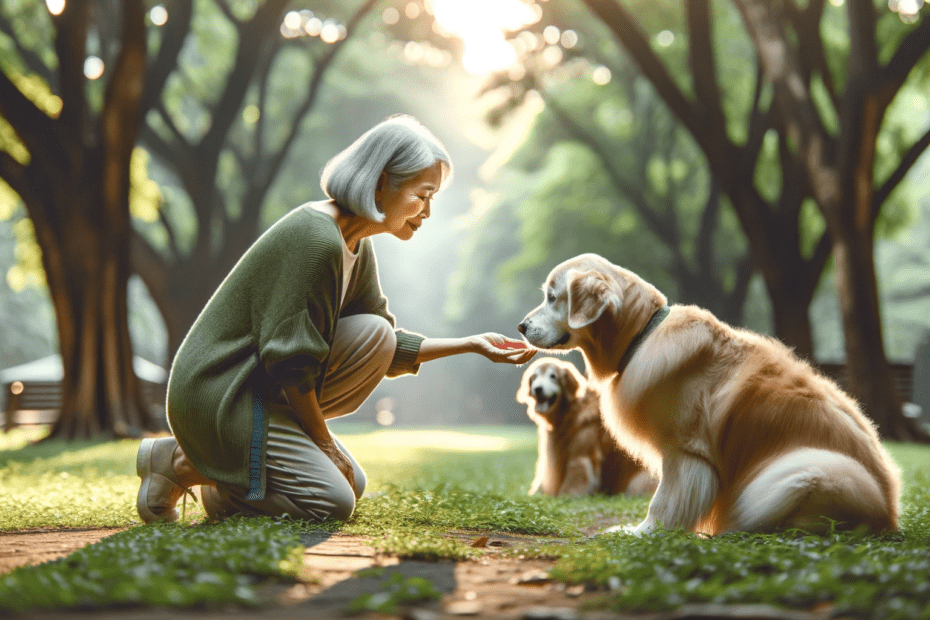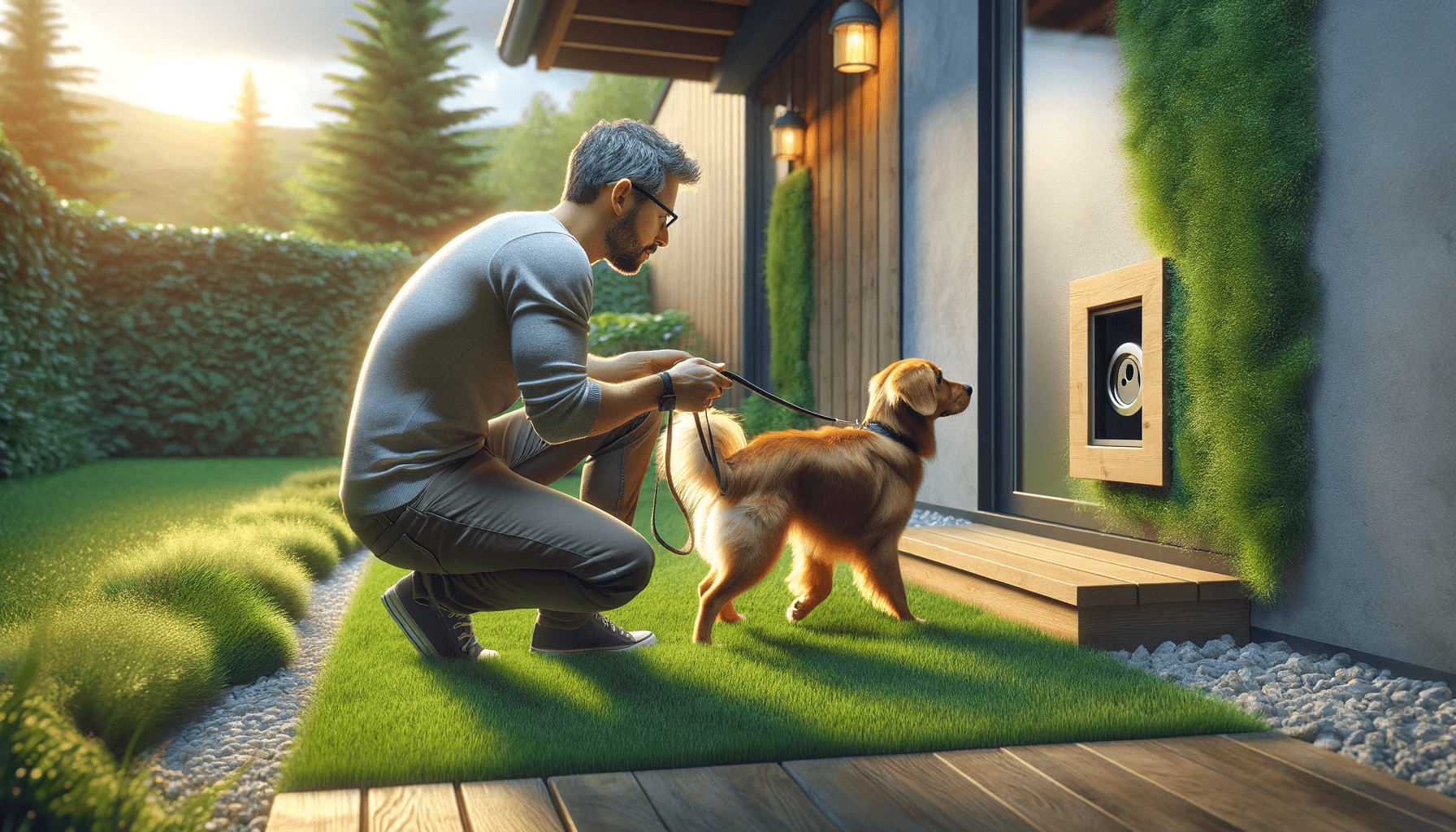If you have an aggressive dog, behavioral training is crucial. It can help you better understand your dog's aggression and give you effective techniques to modify their behavior.
Through positive reinforcement, you can address fear and anxiety, while building trust and bonding with your furry friend.
Behavioral training is not a quick fix, but with commitment and consistency, you can achieve long-term success and maintain positive behavior changes.
Discover why behavioral training is important for aggressive dogs and ensure a happier, safer life for both you and your pet.
Key Takeaways
- Positive reinforcement is effective in reducing aggression and promoting positive behavior.
- Professional trainers can enhance the training process and provide guidance and support.
- Behavioral training helps build a strong bond between the owner and the dog.
- Understanding the root cause of aggression helps tailor training techniques to address it effectively.
Benefits of Behavioral Training
You should regularly engage in behavioral training with your aggressive dog to experience the numerous benefits it provides. One of the key benefits of behavioral training is the use of positive reinforcement. Positive reinforcement involves rewarding your dog for exhibiting desired behaviors, such as calmness and obedience. This method has been proven to be effective in reducing aggression and promoting positive behavior in dogs. By rewarding your dog with treats, praise, or playtime when they display appropriate behavior, you're reinforcing those behaviors and encouraging them to continue behaving in a positive manner.
Another important benefit of behavioral training is the role of professional trainers. While it's possible to train your dog on your own, seeking the help of a professional trainer can greatly enhance the training process. Professional trainers have the knowledge and experience to address the specific needs of aggressive dogs, and they can provide you with the guidance and support necessary to effectively train your dog. They can also teach you the proper techniques to handle your dog's aggression and help you develop a strong bond with your pet.
Understanding Aggression in Dogs
To understand aggression in dogs, it's important to explore the causes behind it. Aggression can stem from fear, territoriality, or resource guarding, among other factors. By identifying the root cause, you can tailor your training techniques to effectively address the aggression and help your dog develop more appropriate behaviors.
Causes of Canine Aggression
Understanding the causes behind canine aggression is crucial in effectively addressing and managing this behavioral issue. Here are four key factors that can contribute to aggressive behavior in dogs:
- Fear and Anxiety: Dogs may become aggressive when they feel threatened or anxious. Identifying and addressing the underlying fear or anxiety can help alleviate aggressive behaviors.
- Territoriality: Dogs are naturally protective of their territory and may display aggression towards unfamiliar people or animals encroaching on their space. Proper socialization and training can help prevent territorial aggression.
- Lack of Socialization: Dogs that haven't been properly socialized with other dogs, animals, or people may exhibit aggressive behavior due to fear or discomfort in new situations. Early socialization is essential in preventing aggressive tendencies.
- Genetics and Breed Predisposition: Certain breeds may have a genetic predisposition towards aggression. However, it's important to note that breed alone doesn't determine aggression; individual temperament and upbringing play significant roles.
Effective Training Techniques
To effectively address and manage aggression in dogs, it's important to understand and implement effective training techniques.
One popular method is clicker training, which uses a clicking sound as a marker to indicate correct behavior. This positive reinforcement technique helps dogs associate the sound with a reward, reinforcing desired behaviors and reducing aggression. Clicker training can be used to teach dogs alternative behaviors, such as sitting or lying down, that can replace aggressive behaviors.
Another important technique is leash reactivity management. Aggressive dogs may exhibit reactive behavior while on a leash, such as lunging or barking at other dogs or people. To manage this, it's crucial to use desensitization and counterconditioning techniques, gradually exposing the dog to triggers while rewarding calm behavior.
With consistent training and patience, these techniques can help modify aggressive behavior in dogs.
Effective Techniques for Behavior Modification
To effectively modify the behavior of aggressive dogs, there are several techniques that you can employ.
Reward-based training methods, such as positive reinforcement, can be highly effective in encouraging desired behaviors and discouraging aggressive ones.
Counterconditioning and desensitization techniques can also be used to rewire your dog's response to certain triggers.
Lastly, consistency and patience are crucial in implementing these techniques, as it takes time and effort to see lasting behavior changes in aggressive dogs.
Reward-Based Training Methods
Using treats and praise as rewards can be an effective way to modify the behavior of aggressive dogs. By utilizing punishment-free training methods and clicker training techniques, you can achieve positive results in behavior modification.
Here are four reasons why reward-based training methods are effective:
- Positive reinforcement: Rewarding desired behaviors with treats and praise helps to reinforce those behaviors, making them more likely to occur again in the future.
- Building trust and bond: By using rewards, you create a positive association between you and your dog, strengthening the bond and building trust.
- Reducing fear and anxiety: Punishment-free training methods help to create a safe and positive learning environment, reducing fear and anxiety in aggressive dogs.
- Encouraging mental stimulation: Reward-based training methods engage the dog's mind, providing mental stimulation that can help alleviate boredom and prevent aggressive behaviors.
Counterconditioning and Desensitization
For effective behavior modification, you can employ counterconditioning and desensitization techniques in training aggressive dogs.
Counterconditioning techniques involve changing your dog's emotional response to a particular trigger. This is done by pairing the trigger with something positive, such as treats or praise, to create a positive association. For example, if your dog becomes aggressive when seeing other dogs, you can gradually expose them to other dogs at a distance and reward calm behavior. Over time, your dog will learn to associate the presence of other dogs with positive experiences and their aggression will decrease.
Desensitization exercises involve gradually exposing your dog to the trigger that elicits aggression, starting at a low intensity and slowly increasing it as your dog becomes more comfortable. It's crucial to work at your dog's pace and ensure they remain calm throughout the process.
Consistency and Patience
You need to consistently practice patience when working on behavior modification with aggressive dogs. Consistency and patience are key elements in helping your dog overcome aggressive behavior. Here are four effective techniques that emphasize the importance of consistency and patience:
- Set Clear Expectations: Establish clear rules and boundaries for your dog's behavior. Be consistent in enforcing these rules to avoid confusion.
- Reward Good Behavior: Use positive reinforcement to reward your dog for displaying desired behaviors. This helps them understand what's expected of them and encourages them to repeat the behavior.
- Ignore Bad Behavior: Instead of reacting to your dog's aggressive behavior with anger or frustration, remain calm and ignore the behavior. This teaches your dog that aggression won't get them attention or rewards.
- Practice Regular Training: Consistently work on training exercises with your dog to reinforce good behavior and improve their overall obedience.
The Role of Positive Reinforcement
To effectively train aggressive dogs, it's crucial to employ positive reinforcement as a means of encouraging desired behaviors. Positive reinforcement techniques involve rewarding your dog for exhibiting the behaviors you want to reinforce. One highly effective method is using treats for training.
Using treats as a form of positive reinforcement has been proven to be highly effective in modifying aggressive behavior in dogs. When your dog displays a desired behavior, such as sitting calmly or refraining from aggression, you can reward them with a small, tasty treat. This positive association helps to reinforce the desired behavior and encourages your dog to continue exhibiting it.
It is important to choose treats that your dog finds highly motivating. This could be a special treat they only receive during training sessions or a favorite food item. The key is to find something that your dog sees as a valuable reward and will work for.
When using treats for training, it's important to remember a few key points. Firstly, timing is crucial. You should reward your dog immediately after they exhibit the desired behavior, so they can make the connection between the behavior and the reward. Secondly, be consistent in your rewards. This means rewarding your dog every time they display the desired behavior until it becomes a consistent habit.
Addressing Fear and Anxiety in Aggressive Dogs
Addressing fear and anxiety in aggressive dogs starts with understanding and addressing the underlying causes of their emotional distress. It's crucial to tackle these issues head-on, as fear and anxiety can lead to aggressive behavior if left unresolved. Here are four behavior modification techniques that can help address fear, aggression, and anxiety in aggressive dogs:
- Desensitization and Counterconditioning: This technique involves gradually exposing the dog to the fear-inducing stimulus in a controlled and positive manner. By pairing the stimulus with something the dog enjoys, such as treats or play, the dog can learn to associate the previously fear-inducing stimulus with positive experiences.
- Behavior Adjustment Training (BAT): BAT focuses on giving the dog control and teaching them alternative behaviors in situations that trigger fear or anxiety. This technique helps the dog develop coping mechanisms and build confidence in stressful situations.
- Relaxation Training: Teaching dogs relaxation techniques, such as deep breathing exercises or settling on a mat, can help them manage their anxiety and reduce aggression. This technique promotes calmness and can be used as a preventive measure before potential triggers occur.
- Medication: In some cases, medication may be necessary to address severe fear and anxiety in aggressive dogs. Consultation with a veterinarian is essential to determine if medication is appropriate and to establish the correct dosage.
Building Trust and Bonding Through Training
Developing a strong bond and trust with your aggressive dog is essential for effective behavioral training. Positive reinforcement and relationship building are key components of this process. Positive reinforcement involves rewarding your dog for desirable behaviors, which helps to build trust and strengthen the bond between you and your furry companion.
To begin building trust, it's important to create a safe and secure environment for your dog. This means providing them with a comfortable space, ensuring their physical and emotional needs are met, and establishing a consistent routine. By doing so, you're showing your dog that they can rely on you and that you're a source of comfort and support.
Incorporating positive reinforcement techniques into your training sessions is crucial. Instead of focusing on punishing or scolding your dog for aggressive behavior, emphasize and reward positive behaviors. This can be done through treats, praise, or playtime. By rewarding your dog for good behavior, you're reinforcing the idea that they'll be rewarded for making the right choices.
Building a strong relationship with your aggressive dog takes time and patience. Spend quality time with them, engage in activities they enjoy, and be consistent in your training efforts. As your bond grows stronger, your dog will become more receptive to behavioral training and more trusting of you as their handler.
Long-Term Success and Maintenance of Behavior Changes
Achieving long-term success and maintaining behavior changes in aggressive dogs requires consistent training and ongoing reinforcement. It's crucial to understand that behavioral changes take time and effort, but with dedication and the right approach, you can help your dog overcome their aggressive tendencies.
Here are four key strategies to ensure long-term success and behavior maintenance:
- Consistency: Consistency is key when it comes to training an aggressive dog. Establish clear rules and boundaries and stick to them consistently. This helps your dog understand what's expected of them and reduces confusion and frustration.
- Positive Reinforcement: Rewarding good behavior is essential for long-term success. Use treats, praise, and other rewards to reinforce positive actions. This encourages your dog to repeat the desired behavior and helps build a stronger bond between you and your pet.
- Continued Socialization: Socialization plays a vital role in behavior maintenance. Expose your dog to different environments, people, and animals gradually and positively. This helps them develop better social skills and reduces the likelihood of aggressive behavior in the future.
- Regular Training Sessions: Keep up with training sessions even after your dog has shown improvement. Regular training helps reinforce the learned behaviors and prevents regression. Make training a part of your daily routine to ensure long-term success.
Frequently Asked Questions
What Are the Potential Risks or Drawbacks of Behavioral Training for Aggressive Dogs?
When considering behavioral training for aggressive dogs, it's important to be aware of the potential risks and drawbacks. These can include exacerbating aggression, reinforcing negative behaviors, and the need for ongoing commitment and consistency.
Can Behavioral Training Completely Eliminate Aggression in All Dogs?
Behavior modification techniques can be used to reduce aggression in dogs. While training alone may not completely eliminate aggression in all dogs, it is possible to manage aggression through training and create a safer environment for both the dog and the people around them.
How Long Does It Typically Take to See Results From Behavioral Training?
Behavioral training is important for aggressive dogs because it can help them learn appropriate behaviors and reduce their aggression. The timeline for seeing results varies depending on factors such as the dog's history and the consistency of training.
Is Professional Help Necessary for Behavioral Training, or Can It Be Done by the Dog Owner Alone?
Seeking professional help for aggressive dog training has many benefits. Challenges faced by dog owners in implementing behavioral training for aggression can be overcome with the guidance and expertise of a professional.
Are There Any Specific Breeds That Are More Difficult to Train Out of Aggression Than Others?
Some specific breeds of dogs may present more training challenges when it comes to aggression. It is important to understand the unique characteristics of these breeds and seek professional help to address their behavioral issues effectively.
Conclusion
In conclusion, behavioral training is crucial for aggressive dogs as it provides numerous benefits.
By understanding the root causes of aggression and employing effective behavior modification techniques, such as positive reinforcement, fear and anxiety can be addressed.
Furthermore, training helps build trust and bonding between the dog and owner.
With consistent training and maintenance of behavior changes, long-term success can be achieved.
Overall, behavioral training is an essential tool in transforming aggressive dogs into well-behaved and happy companions.






